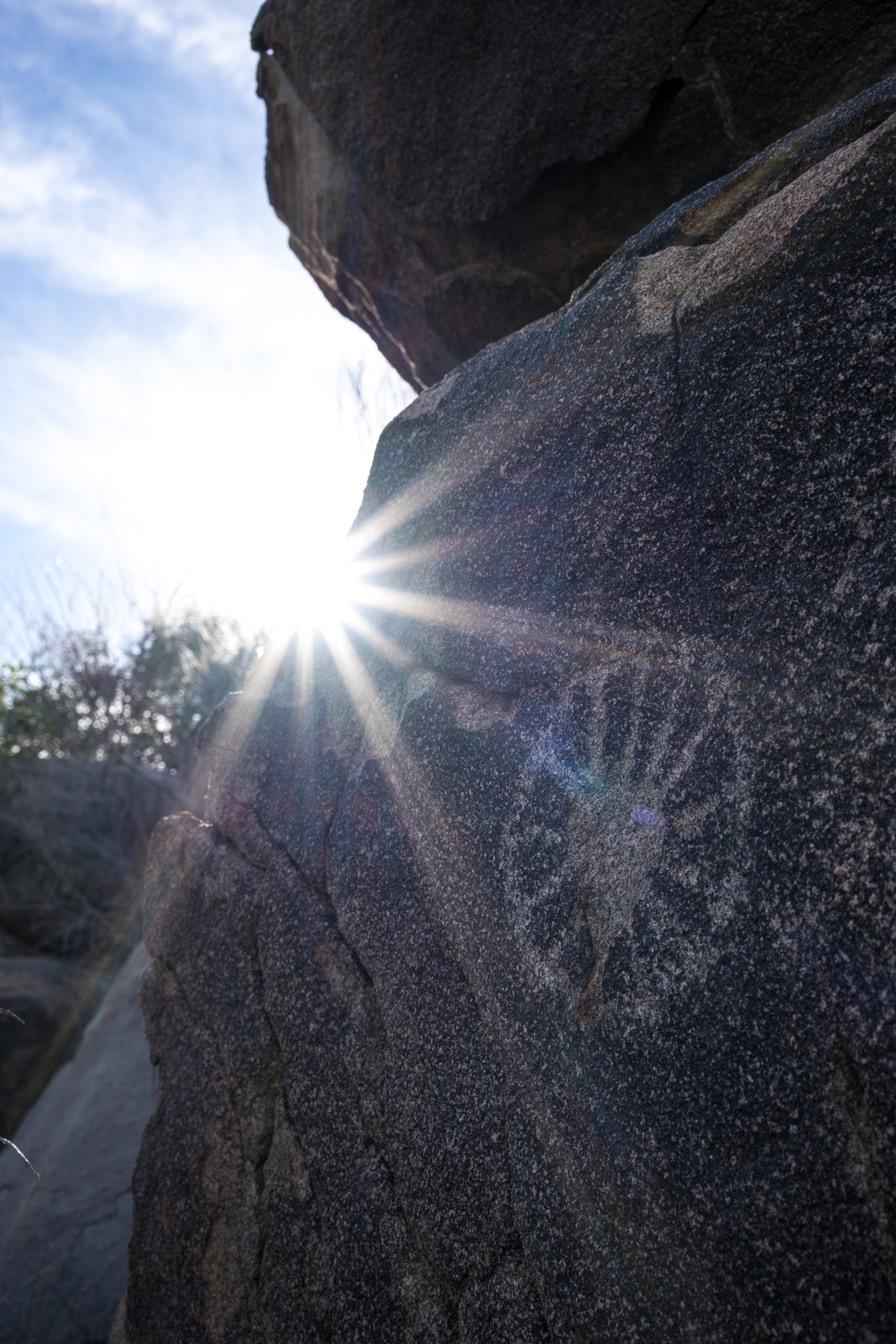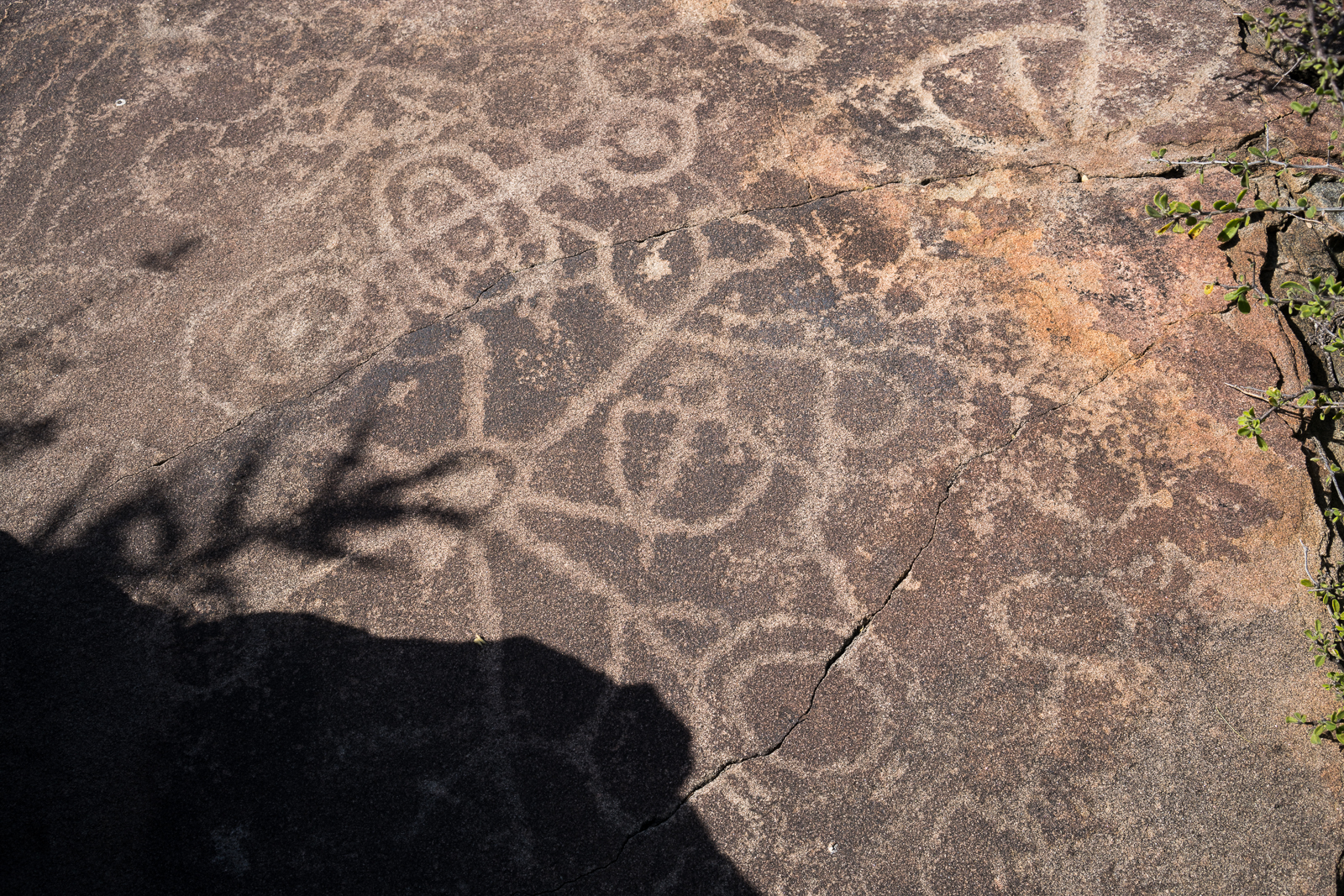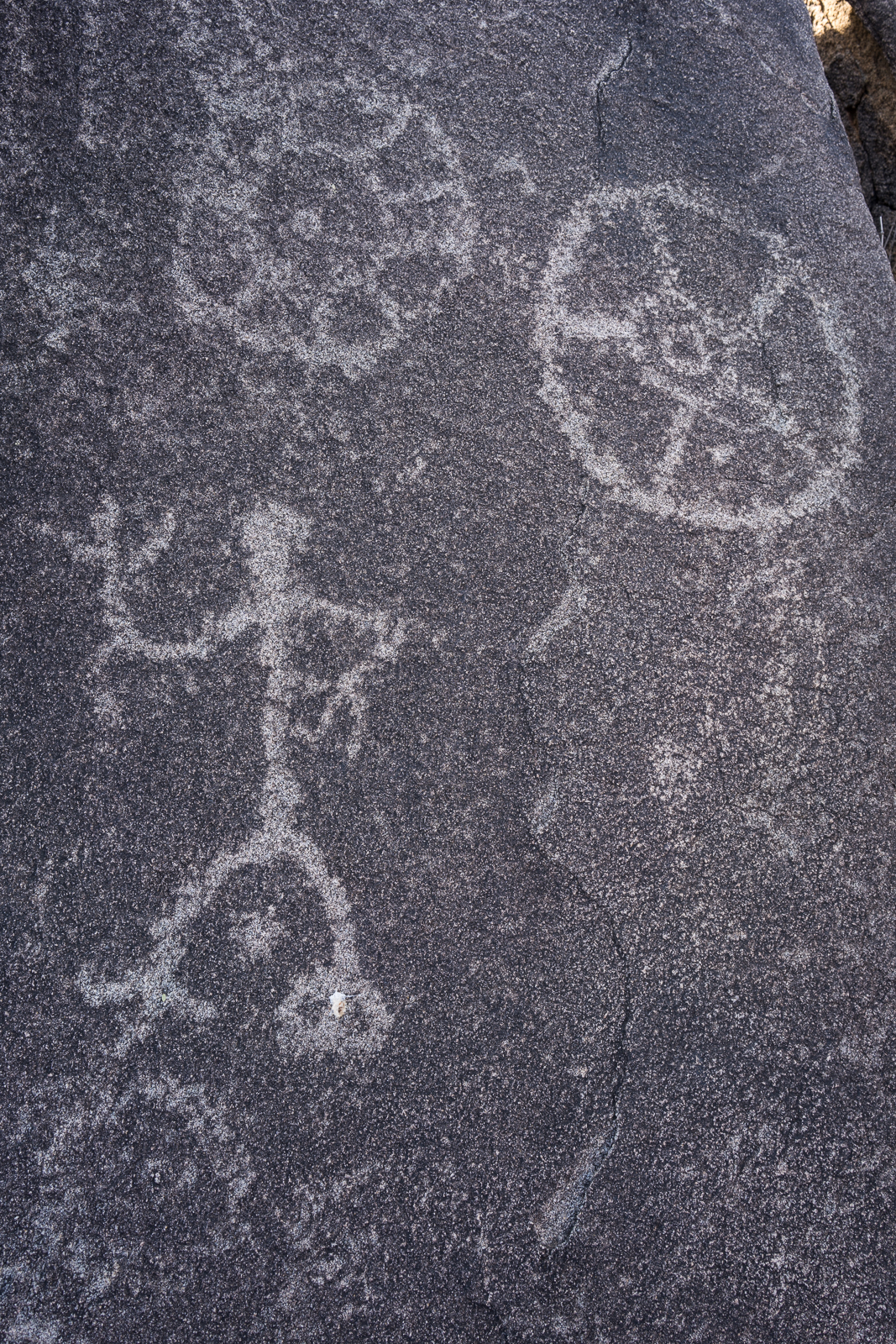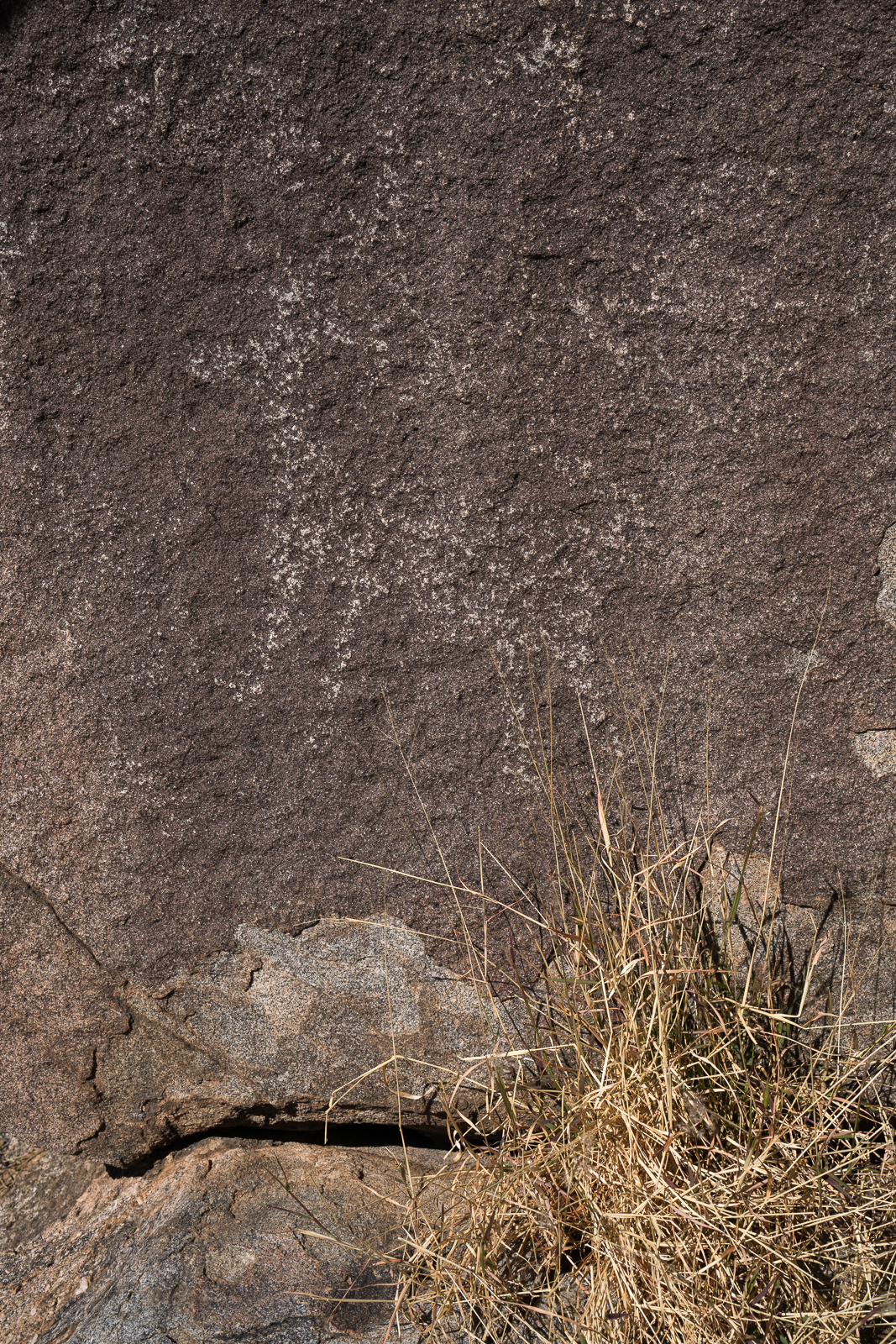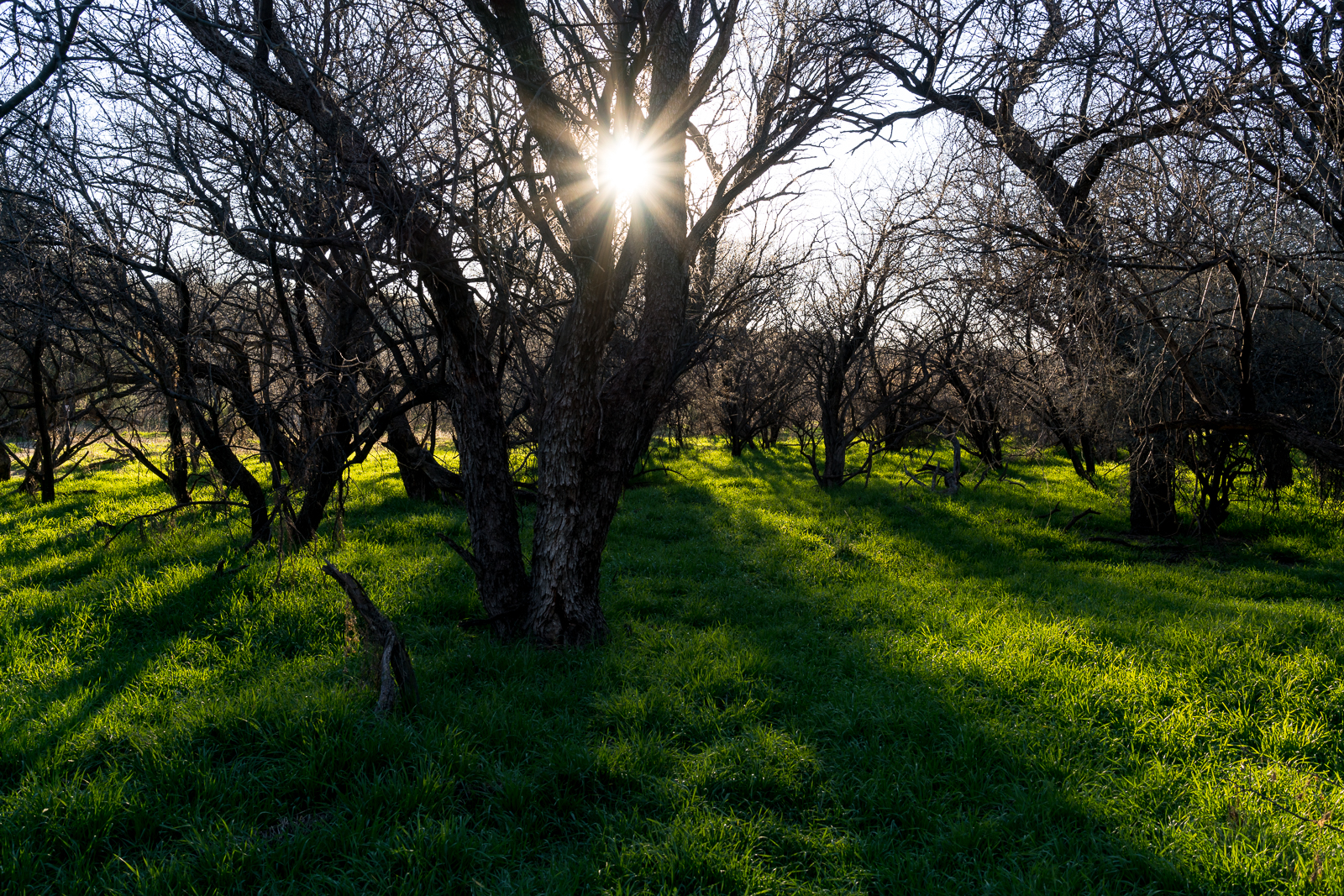In 1949 Ray Romo was walking near the top of a hill above the Sutherland Wash Rock Art District when he found a ceramic jar covered by an inverted bowl – the ceramics and contents as described in Archaeology in the Mountain Shadows – Exploring the Romero Ruin – by Deborah L. Swartz and William H. Doelle:
Both vessels were decorated with red-on-brown designs, which dated between A.D. 1100 and 1150. The jar contained around 100,000 stone and shell beads, and about 30 copper bells.
Most of the beads were made from red and black stone, but a small number were made of turquoise or marine shell. A majority of them exhibited signs of wear from having been strung. However, no thread was found to show whether they were strung when placed into the vessel. This find is called the “Romo Cache” after Mr. Romo.
The estimate in Archaeology in the Mountain Shadows is that it would take a single person 2.8 years of constant work to produce the 100,000 beads and if strung together it they would stretch 300 feet – an astonishing quantity, while I have not seen a concrete theory offered for the reason the cache was created it seems hard to believe that it didn’t have quite a bit of meaning to the person/people who left the objects.
Copper bells, made in Mexico, have been found in sites across the Southwest but are not common and finding 30 bells in one locations seems to be very rare. From Archaeology in the Mountain Shadows:
Copper bells were made using a process called the “lost wax” method. A small pebble was embedded into a ball of clay, the clay was dipped into wax to form an even coat, and then the waxed ball was surrounded with more clay. Molten copper was poured into the space held by the wax, which melted out. After the copper cooled, the clay was removed from the exterior and chipped off of the pebble inside the copper bell.
The hike to Romo Peak was steep and rugged, we never found any hint of a trail, and to our eyes the summit was remarkably like many other hilltops in the area. We spent some time at the top, enjoying the quickly melting snow, the great views, and wondering at the human activity in the area nearly 1,000 years ago that resulted in the Sutherland Wash Rock Art District and the Romo Cache.








